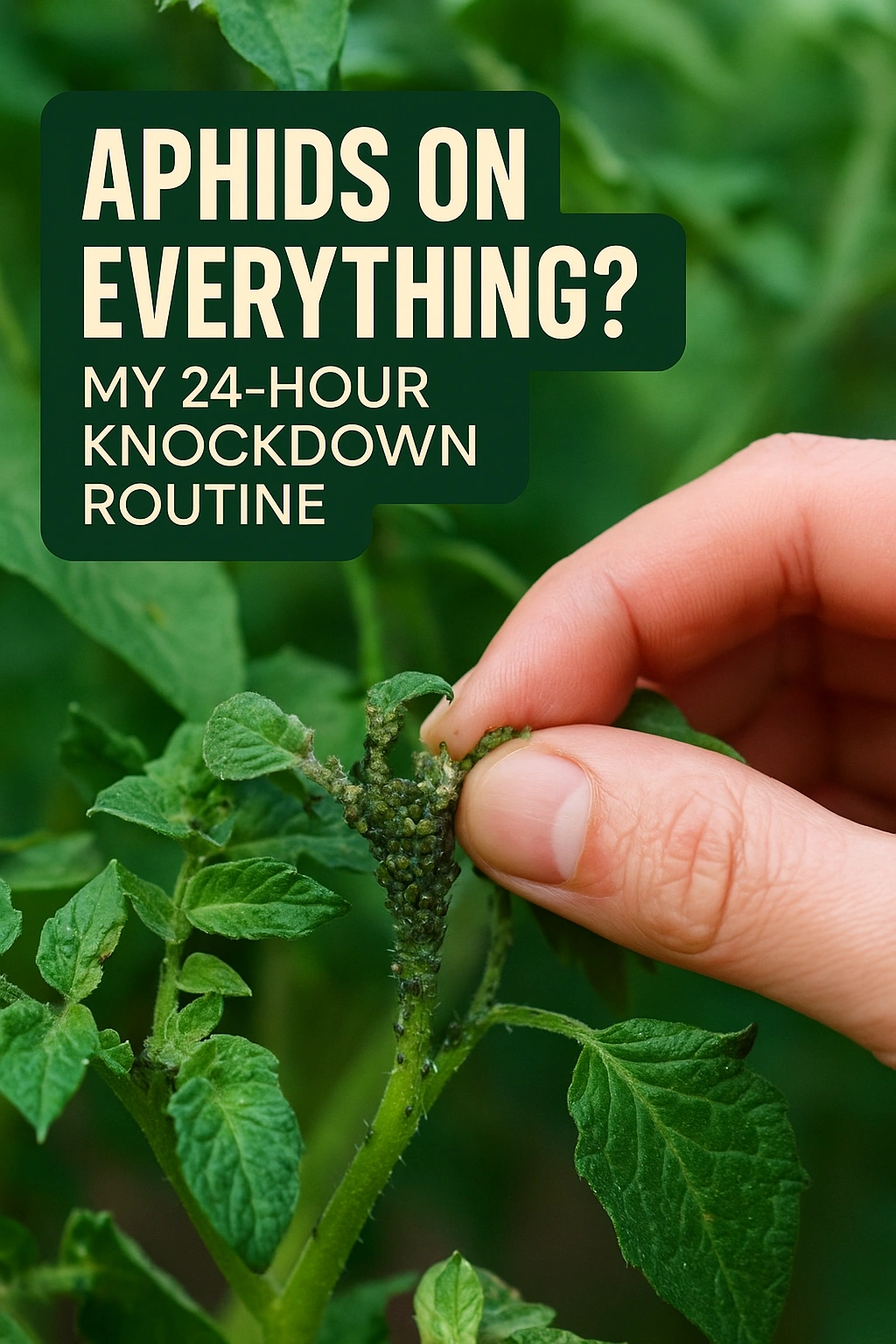
Aphids can wreak havoc on your garden in just a matter of hours. These tiny pests multiply rapidly, feeding on the sap of plants, and can cause significant damage if left unchecked. In this article, I share my comprehensive 24-hour knockdown routine to eliminate aphids effectively, ensuring your garden remains healthy and vibrant. This guide is designed for both novice and experienced gardeners, providing practical steps to tackle aphid infestations swiftly and efficiently.
Understanding Aphids: The Basics
Aphids are small, soft-bodied insects belonging to the family Aphididae. They come in various colors, including green, black, and yellow. These pests are particularly notorious for their ability to reproduce quickly, often giving birth to live young without mating. Understanding their biology and behavior is essential to combatting their presence in your garden.
Life Cycle and Behavior
Aphids have a complex life cycle that includes multiple generations in a single growing season. They thrive in warm weather and can be found on a wide variety of plants, from vegetables to ornamental flowers. Their feeding can lead to stunted growth, yellowing leaves, and even plant death. Recognizing the signs of an aphid infestation early is crucial for effective management.
Preparation: Gathering Your Supplies
Before launching into your 24-hour knockdown routine, it’s vital to gather the necessary supplies. This preparation will not only streamline your efforts but also enhance the effectiveness of your approach.
Essential Supplies
- Insecticidal soap or neem oil: These organic solutions are effective against aphids and safe for most plants.
- Water spray bottle: This will help in applying your chosen solution directly onto the infested plants.
- Hand gloves: Protect your hands while handling chemicals or infested plants.
- Container for collecting infested leaves: This will help in managing waste after treatment.
- Garden hose or pressure sprayer: A more powerful spray can help remove aphids from larger plants.
Step 1: Assessing the Infestation
Before applying any treatments, it’s essential to assess the severity of the aphid infestation. This will inform your approach and help you determine how many plants require treatment.
Inspecting Your Plants
Look for clusters of aphids on the undersides of leaves and along stems. Check for signs of damage, such as curling leaves or sticky residue on the plant. Identifying the most affected areas will allow you to focus your efforts where they are needed most.
Step 2: Immediate Knockdown Treatment
Once you have assessed the situation, it’s time to take action. The goal here is to reduce the aphid population drastically within 24 hours.
Applying Insecticidal Soap or Neem Oil
Mix your insecticidal soap or neem oil according to the label instructions. Spray the solution thoroughly on all affected areas, ensuring you cover both the tops and undersides of leaves. The soap suffocates the aphids, while neem oil disrupts their life cycle. Repeat this treatment every few hours for maximum effect during the first day.
Step 3: Physical Removal Techniques
In addition to chemical treatments, consider employing physical removal methods. These can sometimes provide immediate relief from aphid populations.
Water Spray Method
Using a strong stream of water from your hose or spray bottle, blast the aphids off your plants. This method can effectively dislodge the pests and reduce their numbers significantly. Be cautious with delicate plants to avoid damage.
Step 4: Monitoring and Maintaining
After your initial knockdown treatment, it’s crucial to monitor your plants for any signs of returning aphids. Regular checks will help you catch any new infestations early.
Follow-Up Treatments
Continue applying insecticidal soap or neem oil every few days until you are certain the aphids are gone. This ongoing vigilance will help prevent a resurgence of these pests in your garden.
Preventing Future Infestations
Once you have successfully managed the aphid problem, it’s essential to take steps to prevent future infestations. Prevention is often easier than treatment.
Promoting Beneficial Insects
Encourage natural predators of aphids, such as ladybugs and lacewings, by planting a diverse range of flowers and herbs. These beneficial insects will help keep aphid populations in check naturally. Additionally, maintaining healthy plants through proper watering and fertilization will make them less susceptible to infestations.
FAQs
What are the signs of an aphid infestation?
Signs include curling leaves, yellowing foliage, sticky residue (honeydew), and visible clusters of small insects on the undersides of leaves.
Can I use homemade solutions to get rid of aphids?
Yes, a mixture of water and dish soap can be effective. However, ensure that it is a mild solution to avoid harming your plants.
How quickly can aphids reproduce?
Aphids can reproduce rapidly, with a single female capable of giving birth to dozens of offspring in just a few days under ideal conditions.
Is neem oil safe for all plants?
While neem oil is generally safe, it’s best to test it on a small area of the plant first, as some sensitive species may react negatively.
What should I do if the aphids return?
If aphids return, repeat the treatment process and consider integrating more preventative measures, such as introducing beneficial insects or using companion planting techniques.
